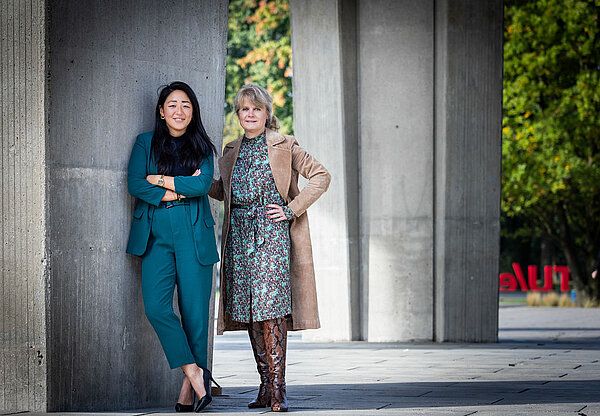VivArt-X: Better aftercare for women after breast cancer

Dan Jing Wu founded the spin-off VivArt-X in 2022 together with her former supervisor, TU/e professor Patricia Dankers. The name VivArt-X comes from the French vivre meaning life. Art stands for artificial and the X for the female chromosome.
Wu is Chief Executive Officer (CEO) of the young company, and Patricia Dankers, as Chief Scientific Officer (CSO), is responsible for the scientific side of the business. “Patricia does the hardcore science, I do the commercial side of science. I set up our strategy, figure out how to get our product to market, and how to deal with regulations,” she summarizes.
“We want to use VivArt-X to help breast cancer patients who have had breast-conserving surgery to grow back body tissue that does not die,” Wu says. About half of the 2.3 million breast cancer patients worldwide need to have cancerous tissue removed and require reconstructive breast surgery.
Women are increasingly opting for reconstruction with body tissue by transplanting their own fat. On average, women need three treatments to achieve the desired results. “Those cells are removed from their stable environment and therefore often die,” Wu explains. “The body cannot always clean up the large amount of dying cells neatly, which can lead to complications, such as inflammation or cysts.”
Healthy remaining fat cells
And this is where VivArt-X steps in: “The idea is that we mimic exactly the same biochemical and mechanical environment that a cell has in the body. We’re working on a material that we can insert along with those fat cells. That forms a kind of matrix in which those fat cells stay healthy and not die,” Wu explains.
Having spoken with women who have had surgery for breast cancer, she knows what the emotional impact can be. “Women who survive breast cancer have already gone through an entire process: chemotherapy, radiation, immunotherapy, and total or partial amputation of the breast. Women who have had breast surgery are not necessarily concerned with regaining the function of the breast, but rather its shape. This makes them feel like women again. We can give them that feeling back with the product we are developing.”
"It's really great to embark on this journey together"

Patricia Dankers, professor of Biomedical Materials, is Wu’s business partner in VivArt-X. She has initiated other startups, such as UPyTher. “In our group, we study how to control a cell based on chemistry. I really enjoy doing fundamental research, but I also think about how I can apply that knowledge, for example for patients.”
“I don’t focus on a single organ in this - I’ve worked on the heart, the kidney, the eye, and, with VivArt-X, the breast. It’s the soft tissues I’m interested in, though.”
From the clinic
The topics often come to her after a physician asks if Dankers and her group can do anything about a clinical problem. “I find it very interesting to talk to doctors and learn more about their field. If the topic fits me, we try to solve the problem.”
Go-getter
Dankers leads the scientific part of VivArt-X, with Wu going shopping to raise money. “We know each other very well, and have known each other for 12 years. This allows us to switch gears quickly. I think it’s really great to embark on this journey together, each with our own expertise and passion. Dan Jing is an enthusiastic go-getter. Starting a business is a matter of doing: don’t mope around, but keep working until you drop. Dan Jing can do that. Then you can achieve a lot.”
